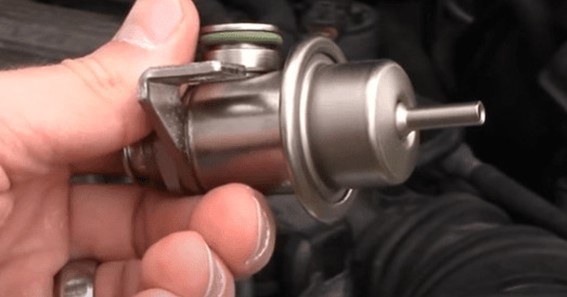How To Clean A Fuel Pressure Regulator? The fuel pressure regulator is an important component of your vehicle’s fuel system. It helps to maintain consistent and optimal fuel pressure, which is essential for efficient engine performance. Over time, the fuel pressure regulator can become clogged with debris or develop other issues that may cause it to malfunction. In this blog post, we’ll walk you through the steps for cleaning a fuel pressure regulator.
Click here – How To Clean Sunbrella Fabric?
How To Clean A Fuel Pressure Regulator?
Step 1: Locate The Fuel Pressure Regulator
The fuel pressure regulator is typically located near the fuel injectors, fuel pump, or fuel rail. Check your vehicle’s owner’s manual to find the location of the fuel pressure regulator.
Step 2: Disconnect The Fuel Pressure Regulator
Before cleaning the fuel pressure regulator, you must first disconnect it from the fuel system. This will prevent fuel from leaking and reduce the risk of fire or other hazards. To disconnect the fuel pressure regulator, first, remove the negative cable from the battery to prevent electrical shock. Then, relieve the fuel pressure by removing the fuel pump fuse and starting the engine until it stalls. Next, disconnect the fuel lines and electrical connections to the fuel pressure regulator.
Step 3: Remove The Fuel Pressure Regulator
Once the fuel pressure regulator is disconnected, you can remove it from the vehicle. Use a socket wrench or pliers to remove any bolts or screws that are holding it in place.
Step 4: Clean The Fuel Pressure Regulator
Use a clean cloth or rag to wipe away any loose debris or buildup from the fuel pressure regulator. Then, use a can of carburetor cleaner or brake cleaner to spray the regulator and clean it thoroughly. Make sure to spray both the interior and exterior of the regulator to remove any dirt, debris, or buildup.
Step 5: Reinstall The Fuel Pressure Regulator
After cleaning the fuel pressure regulator, reinsert it back into its original position and reattach any bolts or screws that were removed in step 3. Reconnect the fuel lines and electrical connections to the fuel pressure regulator, and then reattach the negative battery cable.
Step 6: Test The Fuel Pressure Regulator
After cleaning and reinstalling the fuel pressure regulator, it’s important to test it to ensure that it’s functioning properly. Start the engine and check the fuel pressure with a fuel pressure gauge. If the pressure is within the recommended range, the fuel pressure regulator has been successfully cleaned and reinstalled.
Learn more about similar topics like these on Clynerr
FAQ
Can You Clean Out A Pressure Regulator?
These mineral deposits accumulate inside the valve body, leading to lower-than-intended home water pressure. In most cases, a plumber can resolve this issue by disassembling and cleaning out your regulator valve. Soaking the valve in a calcium and lime remover loosens up and dissolves unwanted mineral deposits.
How Do I Know If My Fuel Pressure Regulator Is Clogged?
Symptoms of a Bad Fuel Pressure Regulator
- Engine Misfires and Decreases in Power, Fuel Efficiency, and Acceleration.
- Fuel Leaks.
- Black Smoke Emitting From the Exhaust.
- The Smell of Fuel from the Dipstick.
- Engine Malfunction.
- Noisy Fuel Pump.
Can You Clean A Gas Regulator?
For this, you need to first shut off the valve on the gas tank. You can then remove the regulator and the hose from the cylinder. Simply dip the regulator into a soap and water solution. Once clean ensure that it is dry before reattaching it.
Click here – How To Clean LG Oven With Blue Interior?
How Do You Clean A Pressure Control Valve?
Unscrew and remove the Safety Valve cap. Lift the Safety Valve Piston out of the Safety Valve body. Wipe the Piston clean. Use a cotton swab to clean inside the Safety Valve body.
Can A Car Run Without A Fuel Pressure Regulator?
You might not have heard the term fuel pressure regulator, but as an imperative component of any EFI system, your vehicle will not operate without it. The fuel pressure regulator sees that the fuel rail builds up enough pressure to support the vehicle’s fuel injector system with the right amount of fuel.
Can A Fuel Pressure Regulator Cause High Fuel Consumption?
If too much fuel flows to the engine, it is the job of the regulator to return excess fuel to the fuel tank, according to YourMechanic.com. If the regulator is malfunctioning, your engine may flood with fuel or cause decreased gas mileage.
Conclusion
Cleaning a fuel pressure regulator is a relatively simple process that can help to maintain the proper functioning of your vehicle’s fuel system. By following the steps outlined above, you can clean your fuel pressure regulator and ensure that it’s functioning properly. If you’re unsure about the process or have any concerns, consult a professional mechanic for assistance.
I Have Covered All The Following Queries And Topics In The Above Article
How To Clean A Fuel Pressure Regulator
How To Clean A Fuel Pressure Regulator
How To Clean The Fuel Pressure Regulator On A 92 Accord Ex
How To Clean A Fuel Pressure Regulator 1997
How To Clean A Clogged Fuel Pressure Regulator
How To Unstick A Fuel Pressure Regulator
How To Fix A Fuel Pressure Regulator
Does Seafoam Clean Fuel Pressure Regulator
How To Test Fuel Pressure Regulator
Dirty Fuel Pressure Regulator
Fuel Pressure Regulator Symptoms
Cp3 Fuel Pressure Regulator Symptoms
How To Clean A Fuel Pressure Regulator
Can a fuel pressure regulator get clogged
Can a fuel pressure regulator be cleaned?
